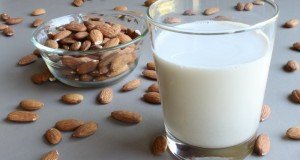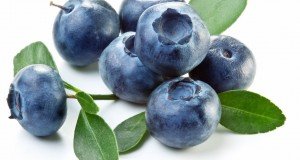Nearly 100% of conventionally-raised chicken is contaminated with cancer-causing arsenic
(NaturalHealth365) In 2011, the United States Food and Drug Administration (FDA) issued a report denouncing an arsenic drug being used in conventional poultry and pigs. That drug is called 3-Nitro® or roxarsone – a known carcinogen to humans – used to treat poultry feed which in turn treats intestinal parasites in chicken and gives them an appealing pink color. In 2010, an estimated 88 percent of about 9 billion chickens raised for human consumption in the United States were treated with roxarsone.
In response to the FDA’s report, the producers of 3-Nitro® – Alpharma (a subsidiary of Pfizer, Inc. and now goes by the name Zoetis, Inc.) voluntarily began a suspension process for its sales. Their final withdraw took three years and ended in late February 2014 when the FDA formally withdrew the drug’s approval.
Even though conventional chicken is no longer threatened by roxarsone, the arsenic scare isn’t over. A new study published in Environmental Health Perspectives indicates that inorganic arsenic is still a threat to conventional chicken in the United States.
More dangerous than roxarsone, inorganic arsenic accumulates in the meat of treated chicken
Cramped and filthy, it’s no wonder that today’s modern chicken production facilities need to treat their chicken to resist parasites and grow faster. Unfortunately, most conventionally-raised chicken in the United States are intentionally contaminated with inorganic arsenic.
According to the Environmental Health Perspectives study, analysis showed that conventional chicken contains high amounts of inorganic arsenic. Mega samples were taken from three categories of chicken:
1. Conventional chickens in which arsenical drugs were used.
2. Conventional antibiotic-free chickens in which arsenical drugs was unlikely but possibly used.
3. Certified organic chicken in which arsenical feed was not used.
The results were clear that inorganic arsenic was highest in cooked conventional chicken meat (1.8 µg/kg) and lowest in certified organic chicken meat (0.6 µg/kg). The difference is astounding.
Detrimental health problems are a result of eating arsenic-laced chicken
According to several studies, devastating health outcomes are a result of eating animal meats induced with arsenic. According to the several studies, arsenic toxicity is species dependent and is well established for inorganic arsenic in humans.
It is associated with chronic disease such as:
Additionally, the United States Agency for Toxic Substances & Disease Registry’s Environmental Health and Medicine Education reports that arsenic toxicity effects most of the body’s system:
- Gastrointestinal
- Hepatic
- Renal
- Cardiovascular
- Neurologic
- Dermal (skin)
- Respiratory
- Hematopoietic
- Reproductive
Replacement for roxarsone is still being used on chicken and is just as dangerous
When roxarsone and two similar drugs (arsanilic acid and carbasone) were recalled by the FDA in early 2014, another arsenic drug called “nitarsone” was left to be used on chicken and turkey for human consumption. Currently, it is the only arsenic-based animal drug that is currently approved for use in food animals.
In April 2015, the FDA announced its pending withdrawal of approval for nitarsone. Zoetis, Inc. (the producer of the drug) makes three forms of the drug. They have pledged to stop marketing it by the end of 2015 and upon the FDA’s formal withdrawal.
But, how many years will it actually take before the drug is completely banned for use in the foods we eat? It took three years for Roxasone, arsanilic acid, and carbasone to be formally banned. Still yet, the FDA still allowed food manufacturers to sell already packaged animal foods that were fed the harmful substances.
When a drug is banned, the ‘phase out’ plans can still take years to complete.
Just because the FDA or food/drug manufacturer pledges to stop using a harmful substance doesn’t mean that they will immediately do so. A pledge is not set in stone, and it’s a process – a long process – to make changes. Sadly, phase out plans can take years.
About the author: Abby Campbell is a medical, health, and nutrition research writer. She’s dedicated to helping people live a healthy lifestyle in all aspects – physically, mentally, emotionally, and spiritually. Abby practices, writes, and coaches on natural preventive care, nutritional medicine, and complementary and alternative therapy.
References:
https://www.fda.gov/AnimalVeterinary/SafetyHealth/ProductSafetyInformation/ucm257540.htm
https://www.fda.gov/AnimalVeterinary/SafetyHealth/ProductSafetyInformation/ucm258313.htm#What_did_FDA_announce_
https://ehp.niehs.nih.gov/1206245
https://ehp.niehs.nih.gov/121-a226
https://www.atsdr.cdc.gov/csem/csem.asp?csem=1&po=11
https://jama.jamanetwork.com/article.aspx?doi=10.1001/jama.300.7.814
https://www.fda.gov/AnimalVeterinary/NewsEvents/CVMUpdates/ucm440668.htm











